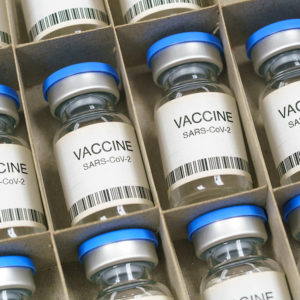Banners and lawn signs are populating our homes, businesses, and houses of worship, giving well-deserved praise to a range of health care personnel working on the front lines caring for those struck with the dreadful coronavirus. This work has challenged the most skilled, experienced, and dedicated health care providers and public health professionals. Actually, this work is exactly what they signed up for – they pledged to use their talents to help and heal those in need and, at times, to pray for them.
As the holiday season began, it was fitting that we would feel some reprieve. The vaccines had arrived on an unprecedented schedule – scientists worked at “warp speed” to bring us this gift that would mitigate and prevent the virus. At the same time, news reporters worked around the clock keeping us up to date on those stricken by the virus and the death toll, telling us what public officials and others are doing about one of the most significant public health challenges in centuries. Thus, we are grateful to journalists who have the skills and, unfortunately, all too common experience about how to cover disasters and crises. It is also what they signed up for and what energizes them.
Few people alive today lived through the Great Depression or a world war. However, we have seen and felt horrific terrorist attacks from foreign and domestic actors who have targeted various places across our country. We have seen and felt natural disasters of earth, wind, fire, and water that have devastated states and regions. In these past calamities, lives were lost, structures and land ruined, and life changed for many in significant ways. However, the COVID-19 pandemic’s effects are reaching every person in our country where we live, work, learn, play, and pray.
Administering vaccines to millions of Americans, especially those most at risk, is a herculean task. Much needs to be put in place before these heroes are able to stick a needle in your arm. Most of the people bringing the vaccine to a place near you do not wear white coats or scrubs. They are public health and health administrators, operations managers, logistics and supply chain workers, planners, monitors, quality control experts, communication and transportation experts, and technology gurus, among others involved in this complex initiative.
These are thoughtful workers – and part of their job is not to panic. They need to work collaboratively among themselves and with health care workers to be effective and efficient. Most are “backroom” workers who may not see a dose of vaccine plunged into someone’s arm. Nevertheless, they see the faces and know many personal stories of those suffering from this vicious virus. Their only motive and interest is to get the job done in a timely and effective manner.
Professionals in health administration are uniquely prepared to ensure successful vaccine delivery. Health administrators routinely integrate management knowledge and skills to lead organizations toward improving health care delivery, quality, and effectiveness and assuring safety – locally and globally. They are competent and compassionate professionals trained in technology and evidence-based programs. Furthermore, their commitment to improve health and reduce health disparities through community-based practice initiatives guarantees ultimate success of our national vaccine delivery program.
However, news headlines have not yet shifted from our sorry state of death and despair since March of last year to understanding and giving some credit for those managing the many steps in the distribution, handling, and administering of the vaccine to millions of Americans. Headline writers have described the process as messy, confusing, flawed, rushed, scrambled, gaping, and slow. These descriptors present a picture of back-end responders acting “helter-skelter” rather than as skilled professionals who carefully oversee the logistics of vaccine production and delivery.
Certainly, we understand the enduring attraction for headline writers and editors seeking to approve stories based on the principle “if it bleeds, it leads.” When our healthy normal daily life returns, health care administrators and public health administrators will not be looking for lawn signs and banners heaping praise upon them. They know their jobs are more about giving credit and taking some blame. However, it is fair to ask that headline writers and editors temper their hyperbole and give a realistic characterization of an effective administrator’s modus operandi: don’t panic, let’s get the job done! A little latitude in characterizing their efforts goes a long way.

